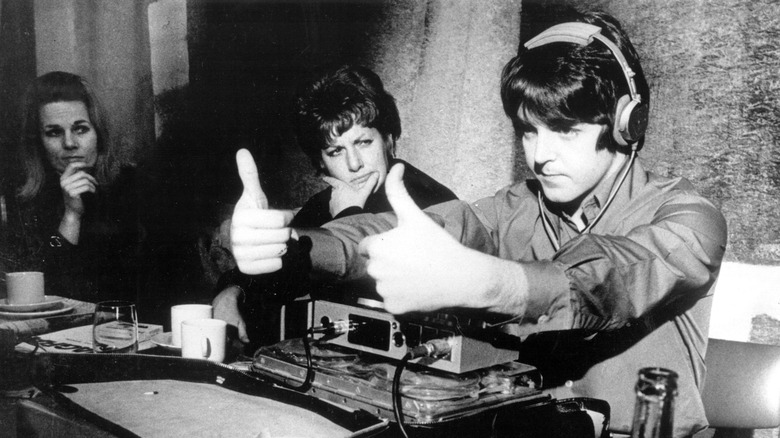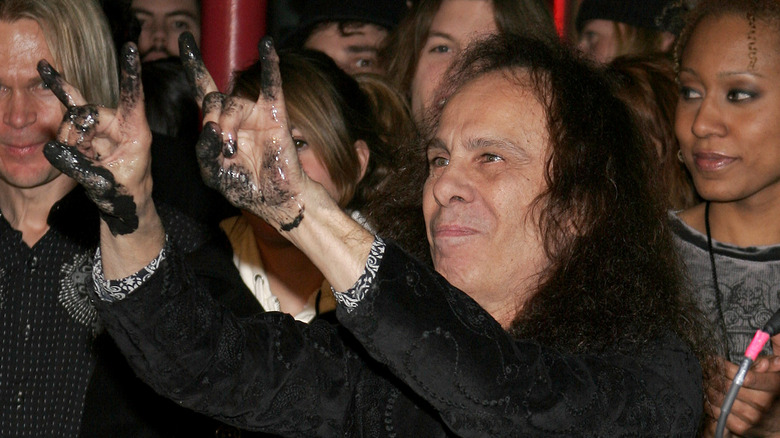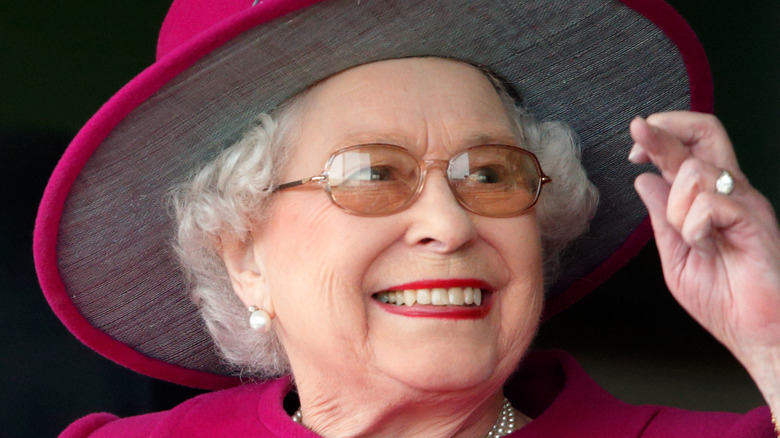Everyday Hand Gestures That Are Offensive In Other Countries
For generations, British schoolchildren learning about World War II have done double-takes at one of the conflict's most iconic images. The image is of Winston Churchill, who, after the Second Battle of El Alamein in November 1942, greeted press photographers with a two-digit hand gesture that looked like a peace sign in reverse. The symbol denoted a "V" for victory. But across Great Britain and Ireland, as well as in Australia, New Zealand, and a number of other countries, the gesture is used as an insult similar to the American use of the middle finger to "flip the bird."
According to Icon (via the Internet Archive) the upper-class Churchill originally had no idea that the sign held a vulgar connotation for everyday Britons, though at the height of the war the image inadvertently provided a helpful though unintended undertone of defiance. Churchill's oversight proves just how easy it is to be divorced from the meanings others bestow on our gestures without our knowledge, even in the country of our birth. But what pitfalls should you avoid when traveling, where, like spoken language, hand gestures can adhere to a totally different lexicon?
The thumbs up
The thumbs-up is a universally positive sign in the west, denoting approval, enjoyment, gratitude, and more. On social media, the thumbs-up symbol has come so closely to mean "like" that, like the long-defunct floppy disc that represents "save," you might find yourself forgetting altogether what the icon originally represents.
As noted by NBC News, the gesture is believed to have originated in Ancient Rome, when audiences at the colosseum would use the gesture to signal that they had seen enough of a fighter — though not in a good way. However, over time the symbol has evolved to become synonymous with positivity, with certain jovial celebrities, such as ex-Beatle Paul McCartney, known for being habitual thumb-uppers (above).
But McCartney better check himself next time he's in the Middle East, where, according to Business Insider, the symbol has the same meaning that displaying a middle finger does in the west. In 2003, Slate reported that American troops in Iraq were repeatedly given the thumbs-up symbol by Iraqi civilians, which, of course, they misinterpreted as a sign of support.
The okay symbol
Like the thumbs-up, the "okay" symbol, formed by holding the forefinger and thumb together in a ring while splaying the remaining fingers, can, at first, seem to be a highly useful tool when traveling in countries where you don't speak the language.
But be wary when heading to Brazil, where the otherwise innocuous hand gesture can mean something very different indeed. According to The New York Times, for Brazilians, the symbol has "scatological" connotations; or, to put it bluntly, the "o" is interpreted as a, ahem, hole. The paper also notes that in the South of France, the void created by the ringed fingers of the "okay" symbol may mean something is worthless, so it's not a great idea to give the gesture to a waiter in a French restaurant when they put your food on the table.
As an aside, the "okay" hand gesture has also come under scrutiny in the U.S. in recent years, with the Anti-Defamation League arguing that the symbol, which could also denote the letters W-P, has been hijacked by "white power" extremists as a symbol of hate (via NPR).
Pointing
It is well known around the world that pointing as a gesture directed as a person can be controversial. Many children are told that it's rude to point, especially at strangers. Why?
Per Science Focus, pointing a single finger is especially contentious when directed at a person because the gesture seems to imply blame — hence the phrase "to point a finger at" someone.
But while most of us know to think twice before pointing a finger at other people, in Malaysia the gesture is almost universally avoided; it's considered rude to point your digit at anything. According to The Cultural Atlas, Malaysia is known for its etiquette. Crossing your legs in front of elders, for example, is also considered bad manners, while bowing before elders is typical practice. To gesture at an object, Malaysians use their thumb, with their four fingers folded under the palm as though making a fist.
Devil horns
There are very few music genres that can be brought to mind simply by the flashing of one hand gesture, but for more than 40 years the symbol of the "devil horns" — two middle fingers held down by the thumb, with the forefinger and pinky aloft — has been synonymous with heavy metal, with musicians and audiences alike invoking the gesture as an invitation to "rock on."
According to jacksonville.com, received wisdom states that the symbol's affiliation with heavy metal began in 1979, when Ronnie James Dio (pictured) became the frontman for Black Sabbath, replacing Ozzy Osbourne, who had been fired from the band. Ozzy had adopted the two-finger "peace" sign as a personal trademark, and Dio, wanting to do something different, came to popularize the use of devil horns in Osbourne's wake. Per the same source, many assumed that the singer invented the symbol himself, but in interviews Dio revealed that he adopted it from his mother, who was Italian.
In fact, the symbol is considered offensive in Italy, where it more rightly denotes the horns of a bull. According to All That's Interesting, to make the bull gesture at someone is to imply that they are, like aged bulls, castrated, and, by extension, that they are being cuckolded.
Fingers crossed
To many people, crossing your middle finger over your forefinger is a sign of luck, or, at least, a sign that you hope will invoke good fortune. Superstitiously, we often say that we are "crossing fingers" for someone else in the hope of bestowing luck upon them, like prayers of good wishes.
Of course, crossing fingers can also indicate that you are lying, especially if you hold your hand behind your back. According to Balally Parish, the use of the symbol originates in Christianity, with the "crossed" fingers evoking the sign of the crucifix. Thus, crossing fingers when telling even a white lie — Christianity teaches that lying is a sin — is performed as a way of asking forgiveness from God.
But in Vietnam, crossing one's fingers has no such hallowed meaning. According to Go4Travel, among Vietnamese people the gesture is said to resemble female genitals. It might therefore be considered the feminized equivalent of "flipping the bird," which the BBC notes is a "phallic gesture."





